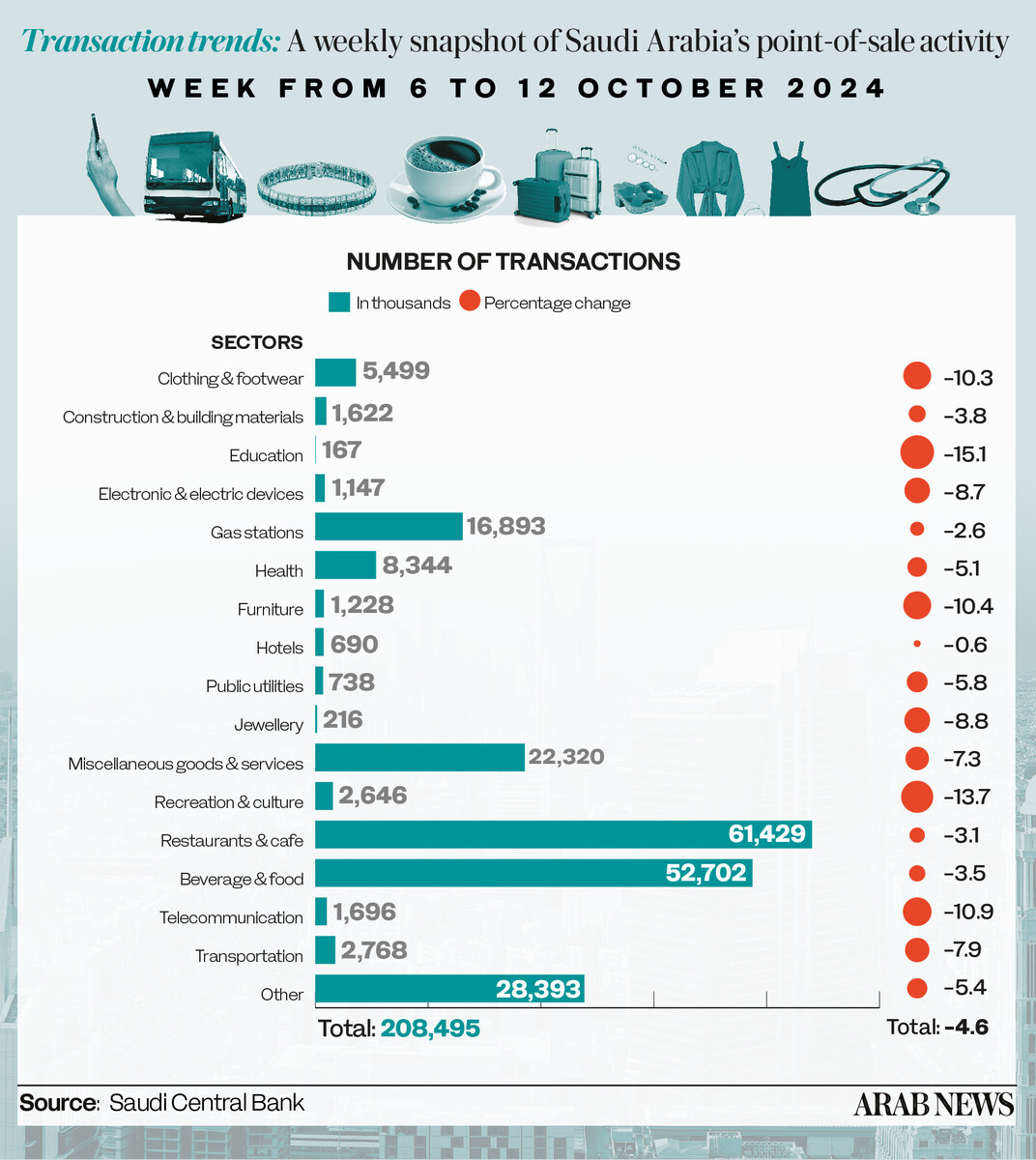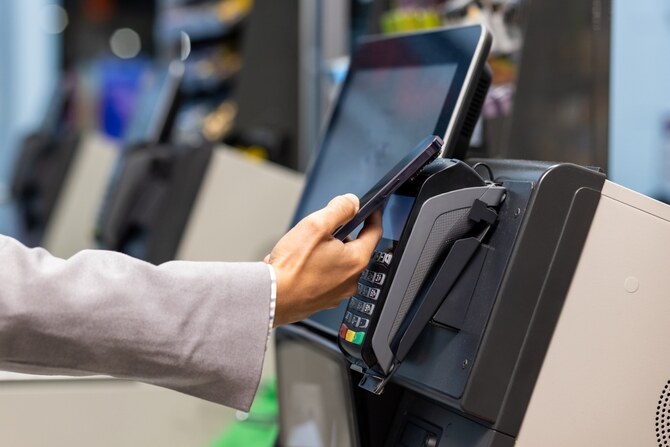RIYADH: Saudi hotel spending rose 2.4 percent in the week of Oct. 6—12 to SR270.7 million ($72.1 million), the only sector to grow amid an overall decline in point-of-sale transactions, official data showed.
According to the latest figures from the Saudi Central Bank, POS transactions fell 10.6 percent to SR12.2 billion after a 2.6 percent rise the previous week.
Spending on education saw the largest decline, plummeting 36 percent to reach SR125.9 million. Expenditures on furniture and electronic devices followed with declines of 21.4 percent and 16 percent, totaling SR274.6 million and SR199.8 million, respectively.
The jewelry sector recorded the smallest decline at 0.8 percent, reaching SR261.4 million during this period.

Saudis spent SR751.9 million on transportation, reflecting a 2.2 percent decline, and SR293 million on recreation and culture, marking a 2.7 percent decrease. Spending on construction materials and public utilities also declined by 9.3 percent and 10.3 percent, respectively.
In terms of transaction value, the food and beverages sector maintained the largest share of POS transactions from the previous week, totaling SR1.9 billion, despite a 14.3 percent decrease in spending.
This was followed by restaurants and cafes at SR1.8 billion and miscellaneous goods and services at SR1.5 billion.
Spending in the top three categories accounted for approximately 43 percent, or SR5.2 billion, of this week’s total value.
Riyadh dominated POS transactions, representing 34.9 percent of the total, with spending in the capital reaching SR4.28 billion, recording a decrease of 9 percent.

Jeddah followed with a 9.1 percent dip to SR1.69 billion, accounting for 13.8 percent of the total, and Dammam came in third at SR627 million, down by 10 percent.
Tabuk saw the biggest decrease in spending, down by 13.7 percent to SR238.4 million. Hail and Abha also experienced declines, with expenditures dipping 13.6 percent and 11.4 percent to SR194.1 million and SR149.4 million, respectively.
In terms of the number of transactions, Hail recorded the highest decrease at 6.7 percent, reaching 3.7 million transactions. Abha and Riyadh followed with declines at 4.7 percent and 4.4 percent, reaching 3 million and 66.3 million transactions respectively.

























